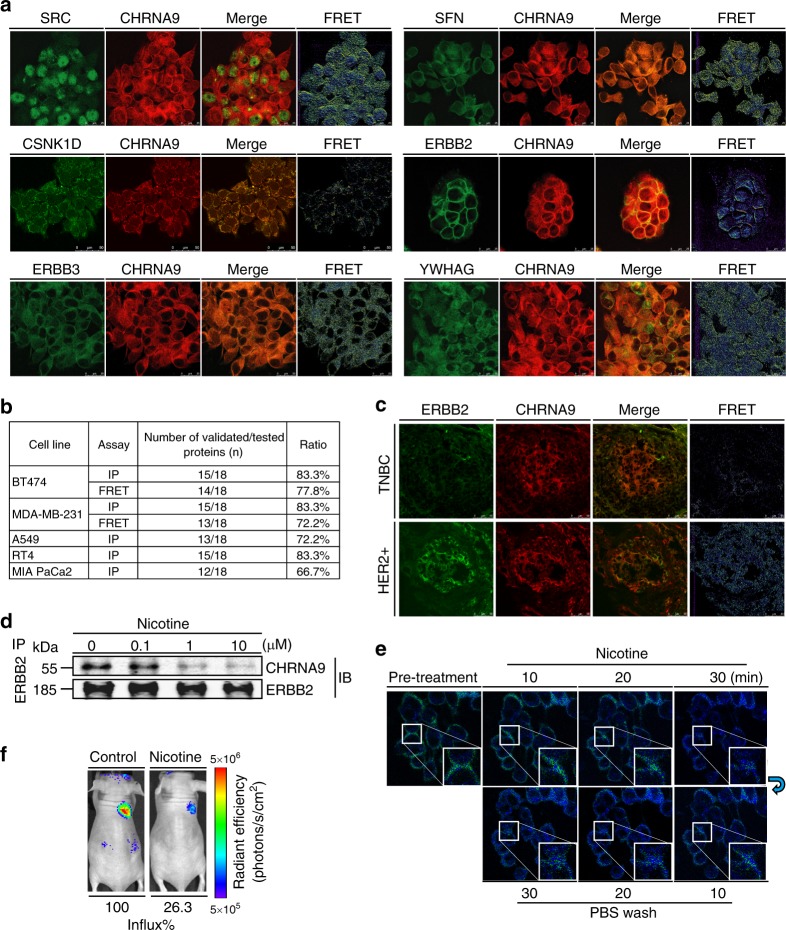Fig. 6.
Identification of nicotinic acetylcholine receptor subunit α9 (CHRNA9)-binding partners and CHRNA9/ERBB2 interaction changes. a Identification of proteins interacting with CHRNA9 by Förster resonance energy transfer (FRET). BT474 cells were hybridized with CHRNA9 and interacting proteins using secondary rhodamine and fluorescein isothiocyanate (FITC) dyes and then examined under a confocal microscope imaging system via FRET module analysis. The representative photos show strong associations between CHRNA9 and the interacting proteins; the results of other partner candidates are shown in Supplementary Fig. 31. The green/yellow/red colors represent the intensity of FRET efficiency. b Validation ratios of the partner candidates associated with CHRNA9 via immunoprecipitation (IP) and FRET analyses. c The clinical breast tumors of triple-negative breast cancer and HER2-enriched subtypes with CHRNA9/ERBB2 interactions were analyzed by FRET. d Dissociation between CHRNA9 and ERBB2 under nicotine dose-dependent treatment. An ERBB2 antibody blotting was used as the loading control. Source data are provided as a Source Data file. e Fluorescence-lifetime imaging microscopy (FLIM) of the CHRNA9/ERBB2 complex in MDA-MB-231 cells pretreated with 10 μM nicotine and washed with phosphate-buffered saline. MDA-MB-231 cells were co-transfected with CHRNA9-CFP/ERBB2-YFP 2 days prior to FLIM analysis. The green/blue colors represent the intensity of FRET efficiency. f Split luciferase complementation assay of the CHRNA9/ERBB2 complex in a xenograft animal model before and after 100 µg kg−1 nicotine oral treatment, as determined by in vivo imaging system detection. MDA-MB-231 cells were co-transfected with CHRNA9-Cluc/ERBB2-Nluc plasmids before being inoculated into the mammary fat pads of nude mice. Luciferase activity was measured before and after 30 min of nicotine administered orally to the same mouse. The color bar indicates a signal gradient from high (red) to low bioluminescence intensity (blue)

